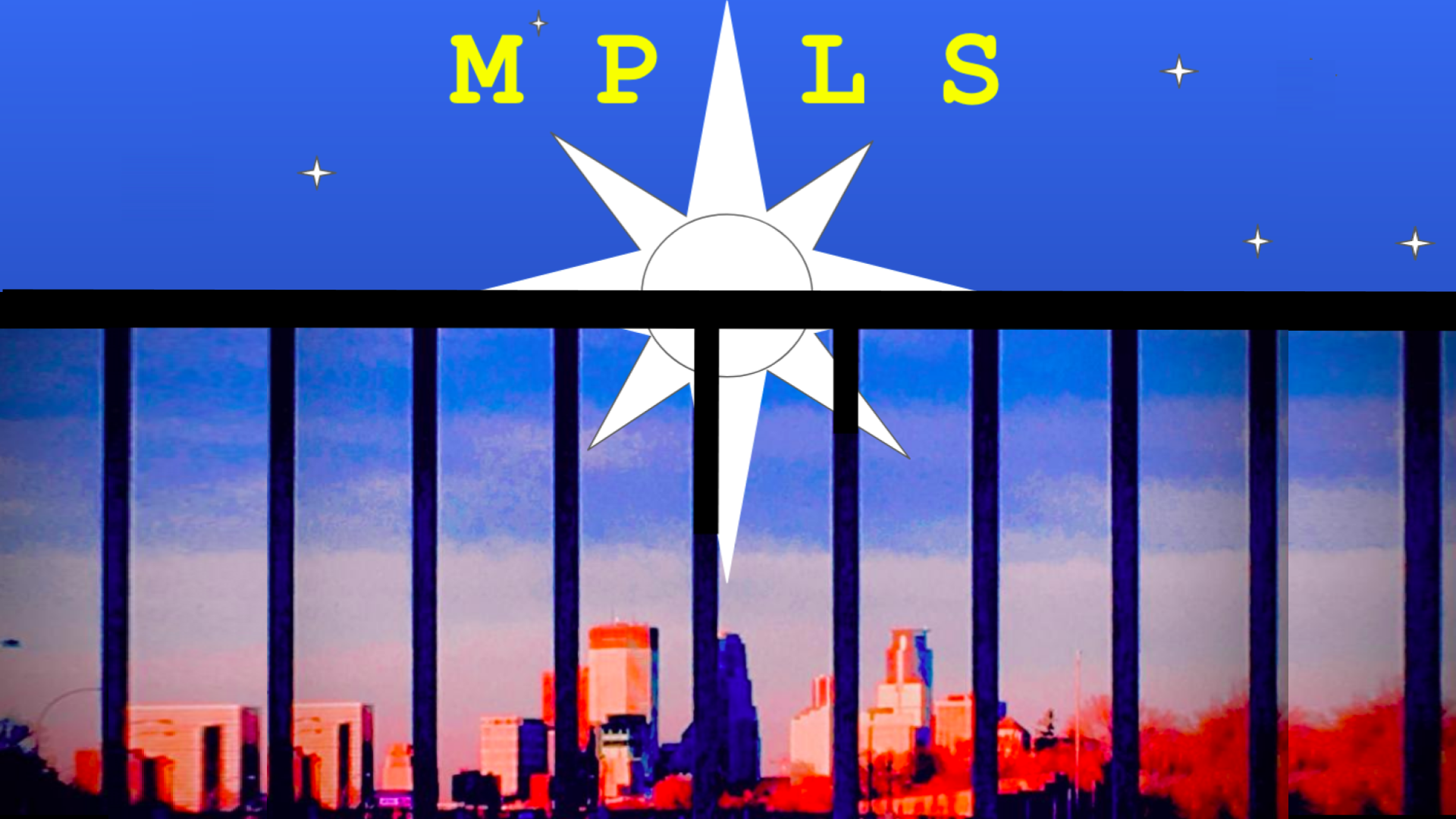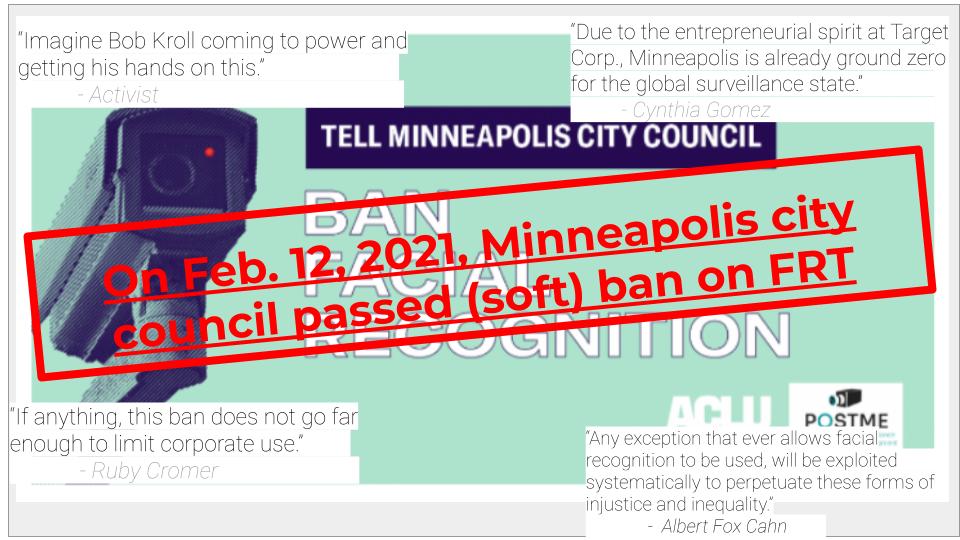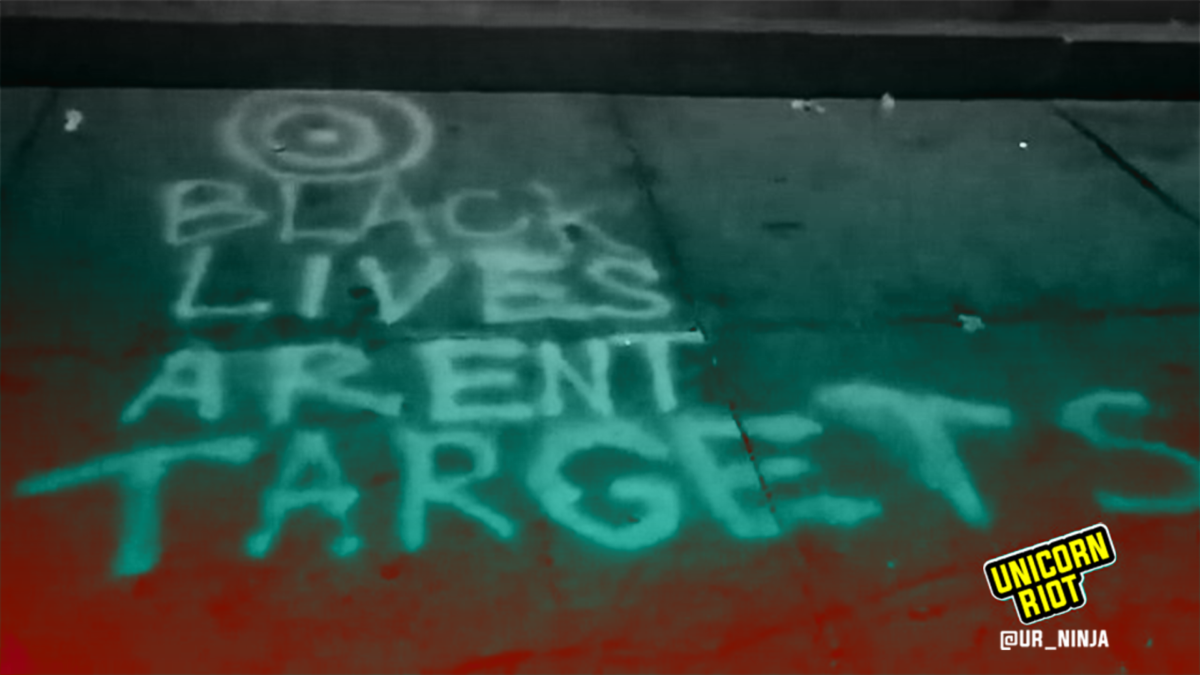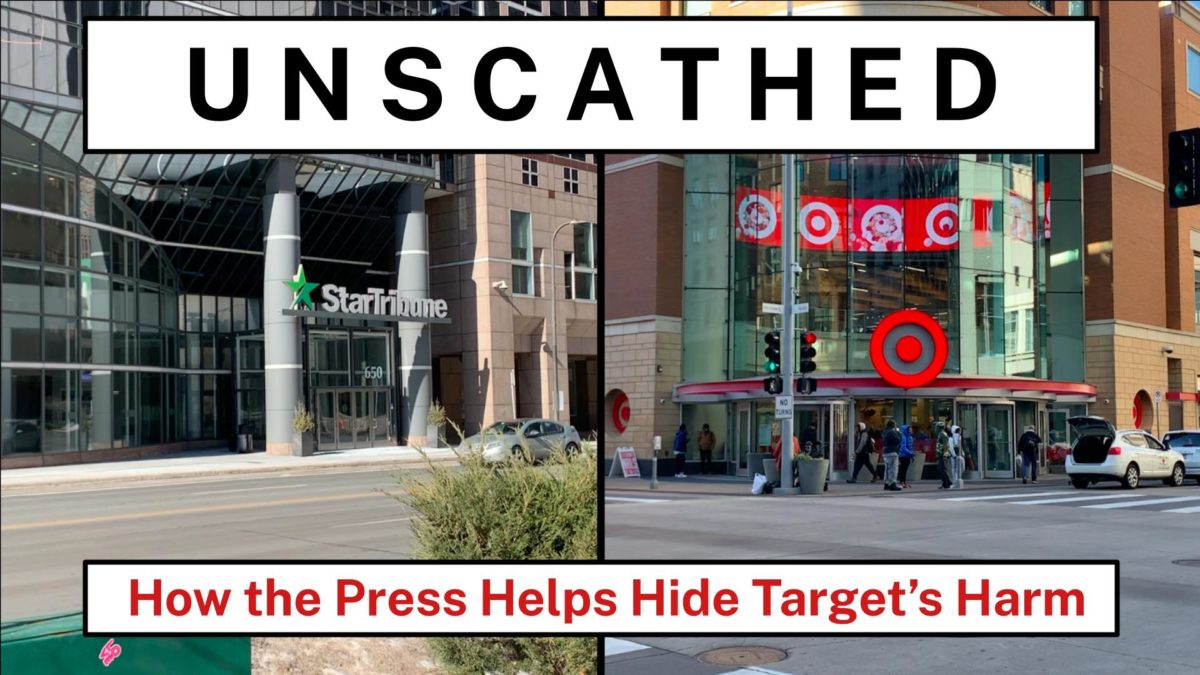How Target Corp., the City of Minneapolis, and Hennepin County Created a Domestic Spy Program that Rolled Back Civil Rights on its Black Population
Brutal policing, a corporate surveillance state, Jim Crow-like segregation, public-private corruption at the highest levels, none of which would be achieved without massive cooperation to systematically deny the voices of Black youths and adults in downtown Minneapolis.
An Ongoing Investigative Series by Contributor Marjaan Sirdar
These reports reveal that the city of Minneapolis, Hennepin County, and multinational retail giant Target Corporation have engaged in a decades-long sweeping surveillance operation. This public-private partnership effectively hides the true nature of the downtown business community’s profit driven agenda which is to weaponize police and surveillance technologies to get rid of “undesirable” populations, especially Black youths.
Target, who could have single-handedly reduced the local Black unemployment rate in Minneapolis — and consequently shrank racial disparities in homelessness — instead, engaged in systematic racial discrimination in hiring, funded draconian policing and prosecution, and profited from massive surveillance and big data, consequently rolling back civil rights on the city’s Black population.
21st Century Jim Crow places Target Corp. squarely at the center of a decades-long racialized policing/surveillance program called the SafeZone that began in 2004 in downtown Minneapolis, and has since expanded to dozens of cities throughout the country via its “Safe City” initiative.
Looking past its friendly title, this Orwellian program uses harsh policing for low-level “lifestyle” offenses such as petty retail crimes, which is essentially what Derek Chauvin killed George Floyd for, and zero-accountability prosecution for brutal cops to achieve its profit-driven agenda.
Hennepin County District Attorney Mike Freeman, a Target Corp. collaborator, refused to prosecute Chauvin and the other officers involved in Floyd’s murder, even after video evidence of the gruesome act went viral. Protesters, who were already past their breaking point due to the ongoing police killings in Minneapolis and the lack of accountability from corporate backed politicians, responded to Freeman’s actions by causing several nights of unrest, which led to the burning of the 3rd precinct police station and looting of several businesses, including the Super Target across the street. It was the response from protesters that caused Minnesota Attorney General Keith Ellison to take the case and hold the cops accountable.
On April 20, 2021, the jury in the Derek Chauvin murder trial delivered swift and decisive guilty verdicts on all three counts for killing George Floyd, reinforcing what activists already knew: that Hennepin County prosecutors and Minneapolis city attorneys have engaged in a criminal conspiracy to cover up crimes committed by the cops for decades. 21st Century Jim Crow provides readers with damning evidence that the problem is much bigger than policing, and the public-private corruption reaches all levels of the government and private sectors.
When cities like Minneapolis allow corporations like Target to set the parameters for law enforcement and prosecution in exchange for corporate gifts, it not only leads to violence and massive unrest — following the murders of George Floyd, Dolal Idd, Daunte Wright, Winston Smith, and Amir Locke all at the hands of law enforcement — it also leads to massive court settlements, costing taxpayers more than $50 million in just the last two years alone for police brutality. Meanwhile, since the murder of Floyd, Target Corp. has made record-breaking profits.
21st Century Jim Crow exposes sweeping implications that Minneapolis has served as a model for what amounts to a domestic spy program that rolled back the civil rights of its Black population, which was inspired by Target Corporation, funded by Minneapolis taxpayers, and exemplified today in China with their own “Safe Cities” program.
[Read each part here 1, 2, 3, 4, 5, 6, 7, 8, 9, 10, 11 or by clicking the link provided on the below titles or clicking the images below.]
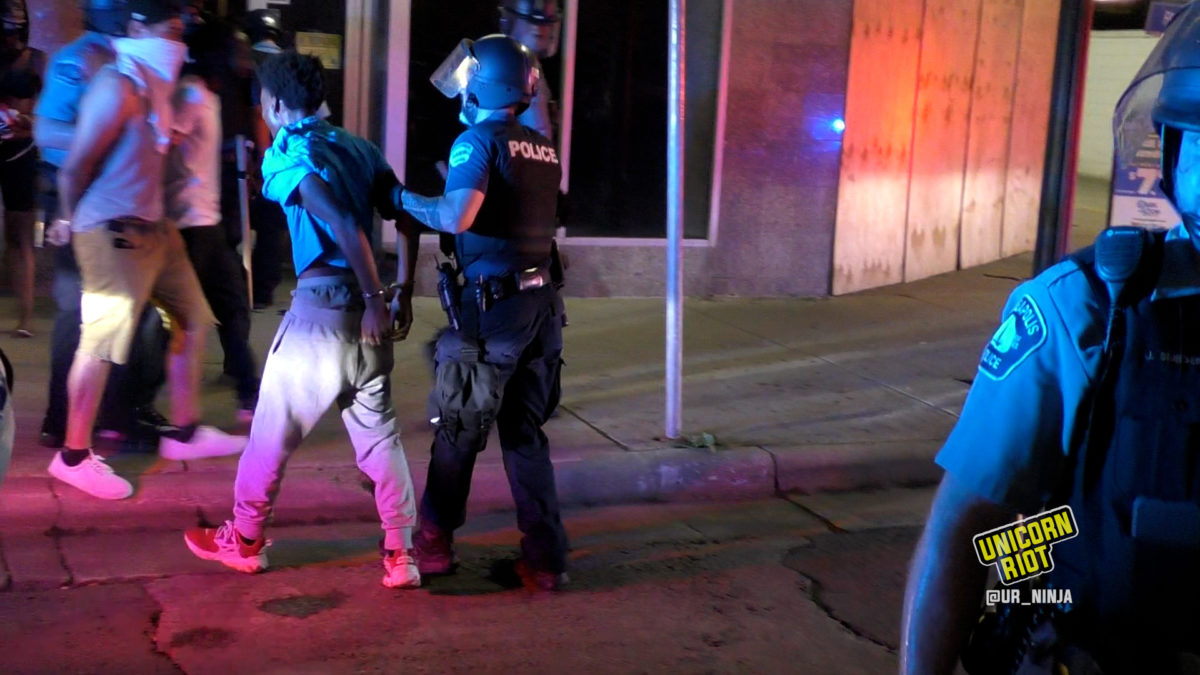
Part 1 – Policing and Punishment in Minneapolis’ ‘SafeZone’ provides critical coverage of the public/private surveillance partnership launched in downtown Minneapolis in 2004
The Downtown 100 Initiative, which is an extension of the SafeZone surveillance program, is an instructive example of how programs lauded as reforms can still impose punitive “law and order” tactics onto targeted populations. “I thought the purpose of this program was to help connect young people to housing and opportunity, so I would frequently update the DT100 team [probation, prosecutors and police] on goals being met by youths,” a former case manager who worked closely with the Downtown 100 program said in an email.
Part 1 questions the role community “justice” programs and businesses play in the displacement of said populations. With all the media coverage and all the reports about racial disparities in Minneapolis, they have excluded perhaps its primary feeder program into the criminal justice system: the Downtown 100.
Part 2 – Minneapolis Faces Facial Recognition provides evidence of how Minneapolis was a model city for massive surveillance in America after 9/11 at a time when residents are drawing the line on invasive technology
This piece traces Target’s SafeZone surveillance program’s roots to England’s intelligence-led policing model and its “anti-social policies.” Despite criticism of China’s surveillance state and dire warnings of its inevitability here at home, Part 2 puts forward evidence that the use of modern surveillance technology and policies that led to sweeping human rights’ violations around the world actually originated in the West, with little opposition.
This story highlights opposition voices who believe the new ordinance approved by Minneapolis City Council on February 12, 2021, limiting government use of facial recognition technology (FRT), a technology that has been linked to sweeping human rights’ violations in China, doesn’t go far enough.
“When the city agrees to use badly designed, oppressive technology such as [FRT], the message you are sending to residents is that you approve of overreaching systemic racist strongholds masked as technological advancements,” declared a scholar and Ward 7 resident during the online Surveillance Ordinance Hearing.
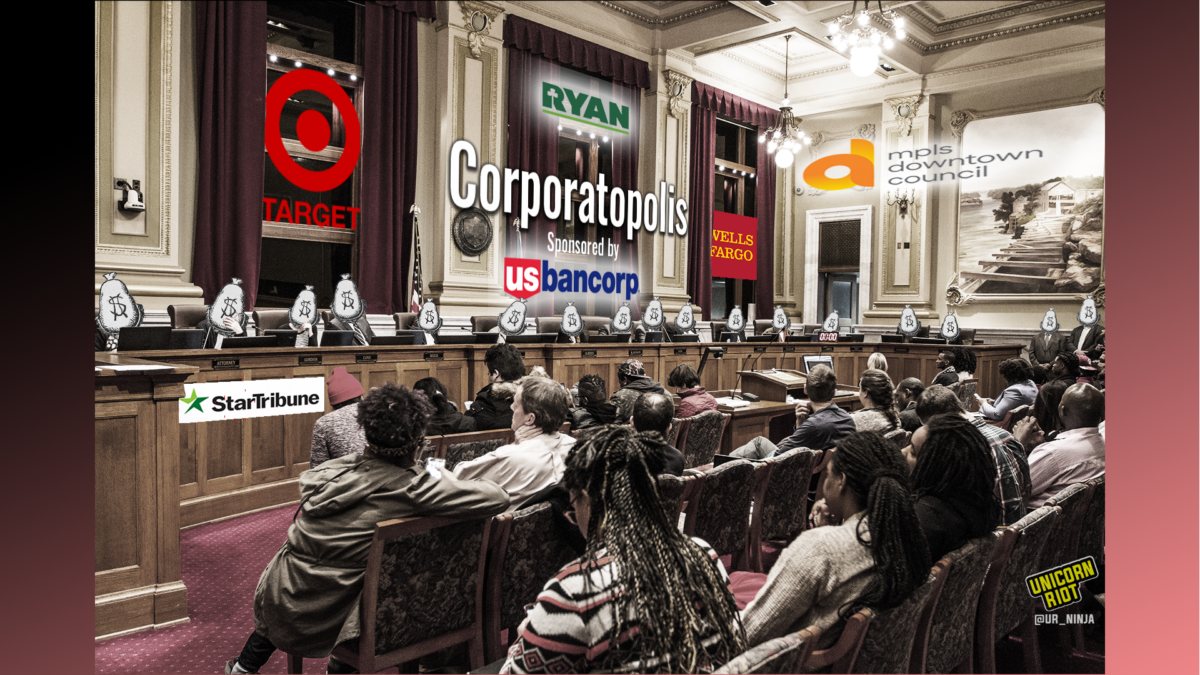
Part 3 – Minneapolis’ Downtown Dark Alliance places Target Corp. at the center of a profit-driven public-private partnership that rolled back civil rights on its Black population
This alliance between the Downtown Council (which represents the downtown business interests including Target), the city of Minneapolis, and Hennepin County, completely blurs the boundaries between the public and private sectors. Corporate giving has resulted in the criminal “justice” and law enforcement systems in Minneapolis surrendering unprecedented power to Target Corp. and its associates, with devastating consequences for Black people especially, and the city overall.
“For years, the young people served at YouthLink had been targeted, harassed, and arrested by the MPD for as little as standing in the 1st Precinct vicinity,” according to a whistleblower who worked for the nonprofit.
All of this with the stated goals of creating the ideal shopping environment for Target’s “suburban” base, for the sake of increasing Target’s brand and profits. “[W]e try to create a shopping experience that’s not just commodity exchange, but a pleasurable experience… The guest experience, as we call it, is a very big contrast in that we want to be a lot more like Disney World and a lot less like a flea market,” one Target executive told a security publication in 2012.
- Listen to the audio version of Part 3 Minneapolis’ Downtown Dark Alliance by People Power Podcast.
Part 4 – Targeted: Young, Black and Harassed in Downtown Minneapolis focuses on the voices of youths telling their stories of harassment and brutality by downtown police at the behest of Target Corporation’s racialized surveillance dragnet
Target Corporation co-created and funded a racialized surveillance network in downtown Minneapolis, beginning in 2004. This article focuses on the voices of their intended “targets,” featuring interviews with two formerly homeless youths and a former case manager. Also included in this story are excerpts from a 2015 short film featuring youths on the Downtown 100 program telling their stories of harassment and brutality at the hands of the Minneapolis police (MPD).
“They came and walked up on us and said they’ll ‘Trayvon Martin our little Black asses.’ His exact words,” said one youth while retelling an encounter with MPD, in Reflections on the Downtown 100.
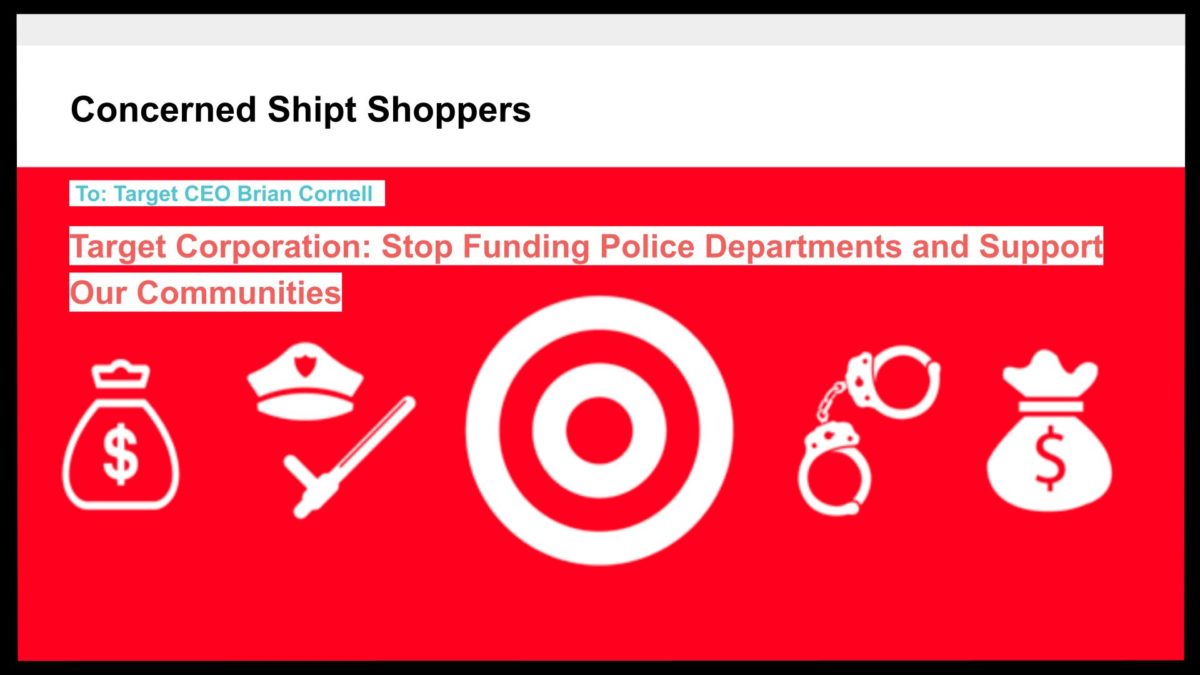
Part 5 – Activists Target Target’s Cop Collaboration details the voices of those who began blowing the whistle on Target Corporation’s decades of funding racialized surveillance and draconian law enforcement after George Floyd’s death
As covered throughout this series, Target created the SafeZone/Safe City program in 2004 as a massive surveillance dragnet to aid local authorities in hard-line police enforcement, particularly against Black youth and homeless populations.
For years, through the Target Foundation, the multinational retailer sponsored police departments around the country; providing services like access to its state of the art forensics labs and police training on how to confront panhandlers, to donations of high-tech surveillance equipment like mobile command posts, and enhanced cell phone tracking systems. It also paid for data mining software by Palantir Technologies Inc., a spy tech startup that got seed investment from the CIA’s venture capital wing, In-Q-Tel. All of this and more has been going on for decades, yet it is hardly known to the general public due to the gap in corporate media coverage. However, after the murder of Floyd, some activists set their sights on Target.
“By providing funding and legitimacy to punitive policing strategies in Minneapolis and across the country, Target bears a unique responsibility for the circumstances that led to the death of George Floyd and countless other victims of police brutality,” proclaimed a group called Concerned Shipt Shoppers in an online petition.
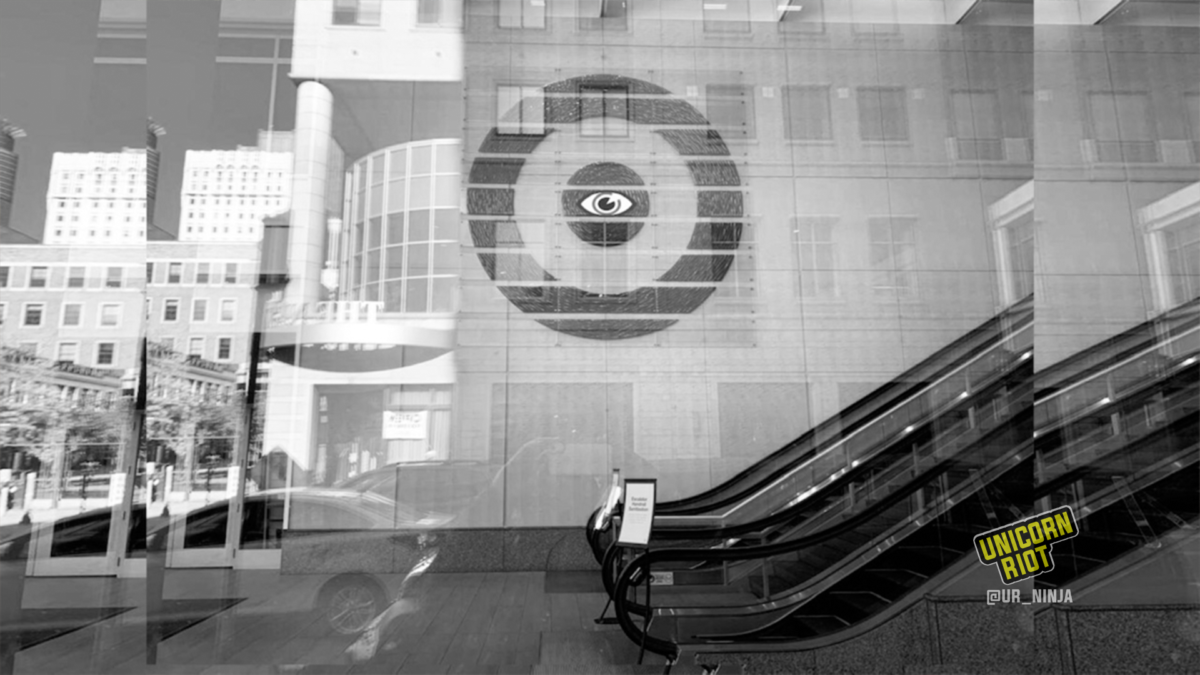
Part 6 – Target Supremacy: What You Should Know About the 2013 Security Breach and More presents evidence that further suggests Target Corp. is a major hidden hand of power in Minneapolis which has acquired troves of data on the general public
Since Target Corporation’s massive hack in 2013, some significant information has come to light, like the fact that Target was extracting extremely sensitive information from millions of its customers using spy technology including hidden cameras and facial recognition software, before it was compromised.
Part 6 provides evidence linking Target’s big data operations, its police partnerships around the world, and its corporate counterintelligence program, to not only a massive surveillance program but something that appears to be much darker. “In many ways, Target is actually a high-tech company masquerading as a retailer,” according to a Target executive.
Part 7 – Unscathed: How the Press Helps Hide Target’s Harm is a short film examining the role of corporate media in denying the voices of Black youths and adults in Minneapolis
The press serves as an intermediary between the multinational retail giant Target Corp., who funds draconian policing and prosecution, and local government. Experts say this trifecta effectively hides the true nature of the downtown business community’s profit-driven agenda which is to weaponize surveillance technologies and police to get rid of “undesirable” groups, especially Black youths, consequently rolling back civil rights for the city’s Black population.
Target’s cozy relationship with the corporate press helped it survive several scandals successfully hiding Target’s hard-line positions, such as former CEO Robert Ulrich’s view on “law and order,” “I don’t just believe in the electric chair, I believe in the ‘electric couch,’” which helped form the basis for its SafeZone program, according to one whistle-blower. (Ulrich did not respond to a request for comment.)
‘Unscathed’ features an interview with writer, scholar, and librarian of 25 years, Renoir Gaither, who sees deep evidence of the local media colluding with Target Corp. and the government. Mainstream media in Minneapolis has used statistics from the SafeZone collaborative to tout crime reduction but systematically failed to tell the stories of the young people impacted by these draconian practices, with clear patterns of prioritizing quantitative over qualitative data, according to Gaither.
“There’s a whole network, a whole web of interests that are attached. It’s never discussed how these work in concert,” he said, “It’s kind of ‘how they work individually’. And it’s painted as a way of helping these young men improve their lives. And… what’s absent is the law enforcement intervention in their lives.”
Renoir Gaither
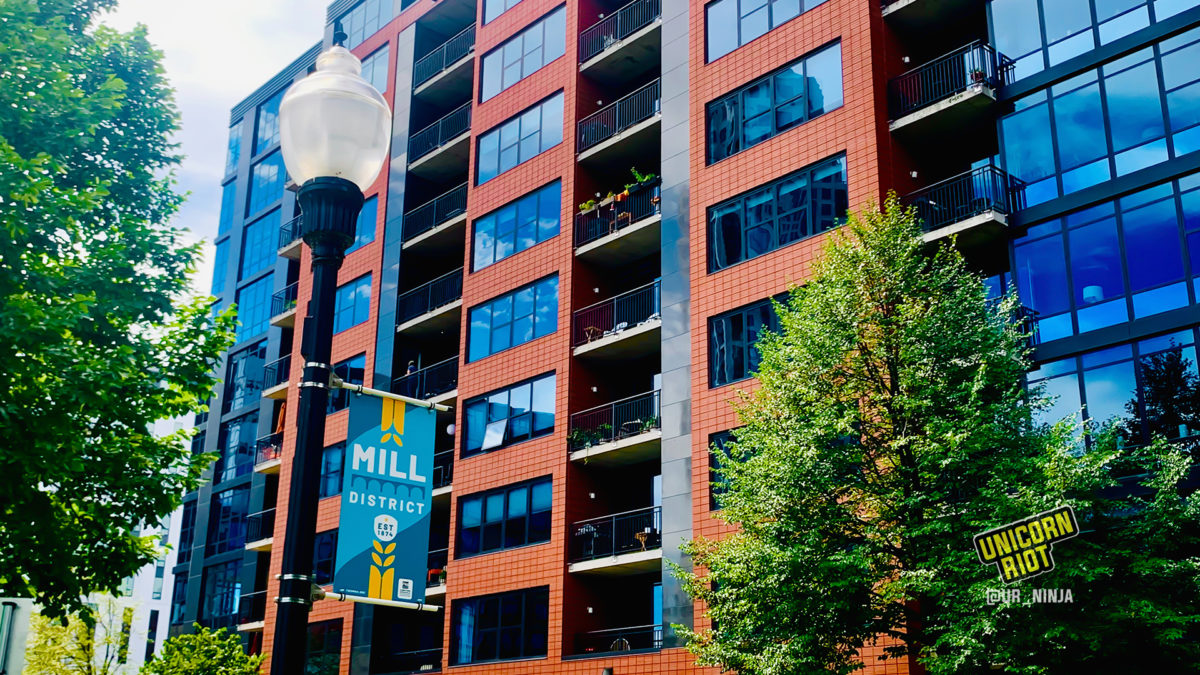
Part 8 – Clearing the Way for a Whiter, Wealthier Tax Base: How the City of Minneapolis Uses Racist Policies and Data to Target ‘Undesirable’ Populations explores various ways in which authorities transformed the city into a playground for “young corporate professionals,” including some programs that preceded Target’s SafeZone surveillance juggernaut.
As the Twin Cities metro area becomes more diverse, the city of Minneapolis trails behind the region’s growth in diversity, with a population trending disproportionately whiter in the past decade. Following the Great Recession, Minneapolis experienced a construction boom and subsequently a population boom, adding 60,000 new residents. City hall has promised that “upzoning,” the practice of increasing multi-family housing stock citywide, will help make way for a more diverse and equitable city. However, data suggests that new residents added to the city in the past decade are disproportionately whiter, wealthier, and consequently more conservative than the existing population.
One former Minneapolis officer turned vocal critic told Unicorn Riot that police were instrumental in gentrifying the city with programs that targeted communities of color for incarceration and removal. Weed and Seed was a program that preceded Target’s SafeZone surveillance program, but its objectives were similar. “It was all about arresting people for livability crimes, which really was just white people calling the cops on Black people for anything,” according to a former Minneapolis cop. CODEFOR also preceded the SafeZone and was the city’s first predictive analytics program, also known as “predictive policing.” CODEFOR used data to track crime “hotspots” and supposedly predicted future crime trends. However, critics say police deliberately inflated this data in communities of color, unironically, the very same communities the city wanted to “turnover.”
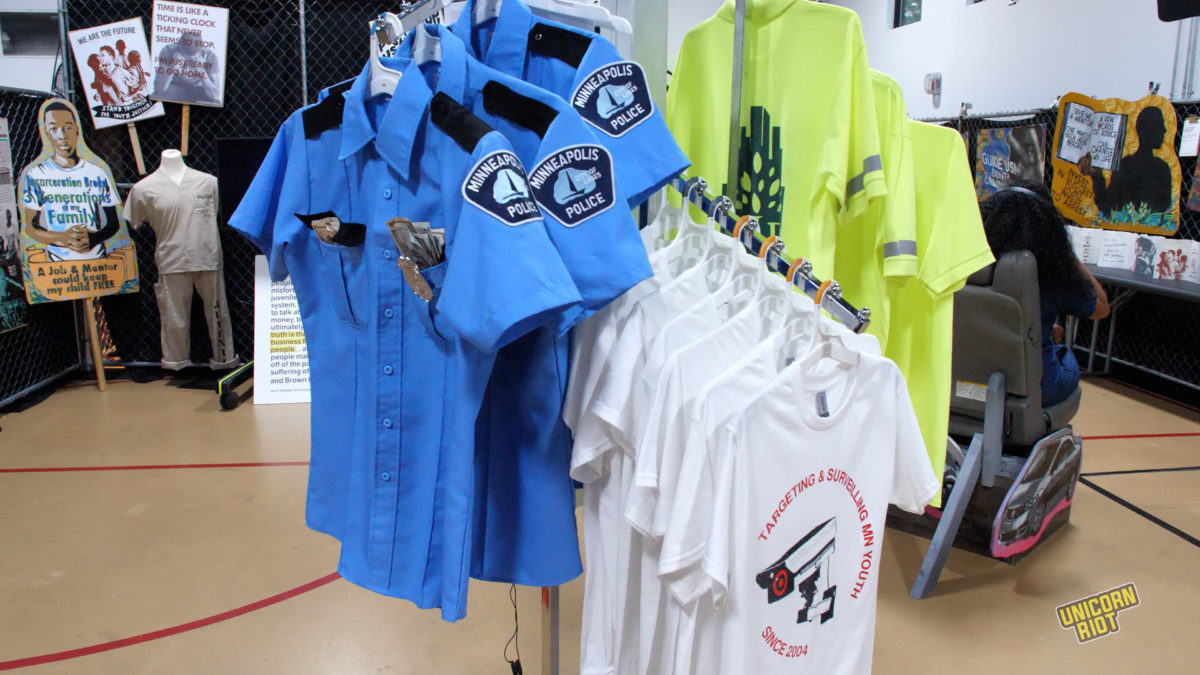
Part 9 – #NoKidsInPrison Art Installation Highlights Youth Incarceration Driven By Target, gives readers a video tour of the showroom led by a youth leader with the End Youth Prisons MN campaign as well as interviews with the young people and lead staff behind the project.
The #NoKidsInPrison installation is part of a national campaign to abolish youth prisons. It’s a collaboration of more than 150 youth artists and activists from various cities over the past decade.
The installation is multimedia and immersive. Guests could interact with the art which was showcased in a variety of mediums including testimonials and songs recorded by youth playing on headphones, a classroom where visitors could learn about the impacts of the school-to-prison pipeline, a makeshift prison cell with a virtual reality headset that simulates being in solitary confinement, a prison phone booth with a young man’s testimonial playing through the earpiece, short documentary films featuring formerly incarcerated youths playing on video monitors, a historical timeline of youth incarceration in America, and a do-it-yourself collage-making station with messages of hope.
One of the latest exhibits added to the installation is called “TARGET(ing) Youth” which takes aim at Target Corp for driving youth incarceration in Minneapolis. It was inspired by Unicorn Riot’s reporting on Target’s SafeZone and the Downtown 100 program.
Read about the #NoKidsInPrison art installation and how Target drives youth incarceration in Minneapolis and watch the 11 minute film taking viewers on a virtual tour of this powerful exhibition.
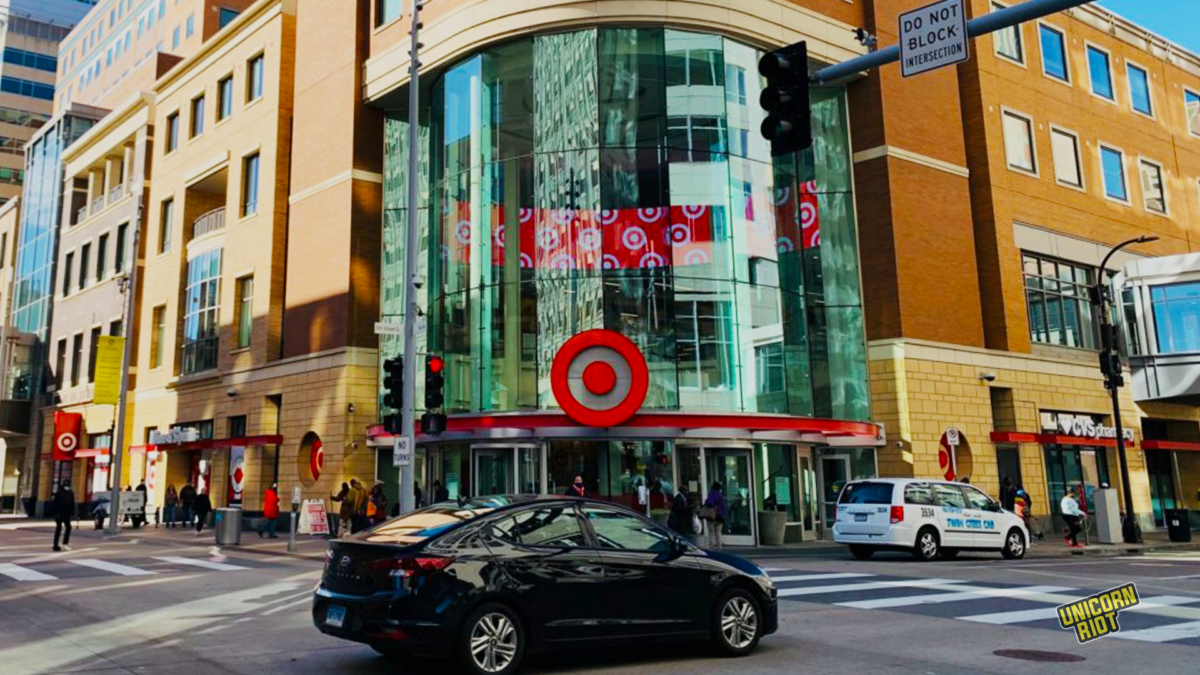
Part 10 – Target Corp’s Critics Call Out Chicanery: New Report Contradicts Official Reason Behind Closings, documents the ongoing deception, this time about why it’s shuttering nine stores.
Data from a recent report by Popular Information does not support Target’s claim that it’s closing stores due to increased theft, while others accuse Target of financial fraud, saying it is falsifying its finances and blaming the poor. Popular Info’s data analysis on the store closures is supported with retail industry data and Unicorn Riot’s ongoing investigation into Target Corp. Target did not respond to Unicorn Riot’s inquiries about the new claims in the report.
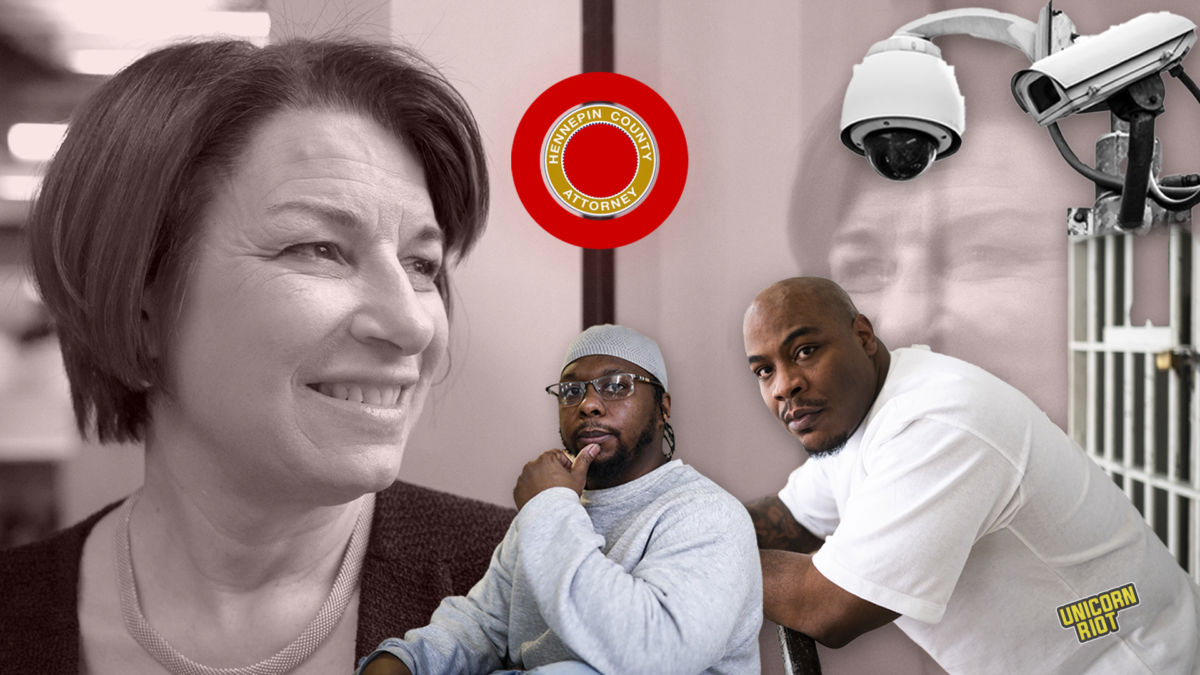
Part 11 – How Target Funded A ‘Tough On Crime’ Prosecutor’s Office, Driving Black Youth Incarceration in Minneapolis retraces the history of the Target-funded Community Prosecution Program, that still exists today, and how the retail giant funded the county attorney’s office for several years to prosecute its self-proclaimed enemies: Black people.
A former Target insider turned whistleblower told Unicorn Riot that it was an open secret within Target’s leadership that former CEO Robert Ulrich was racist and harbored deep anti-Black sentiments. This research demonstrates that such attitudes dominated law enforcement and Minneapolis politics during the era of mass incarceration and Target Corp. was squarely at the center. After the release of two Black men from prison who were incarcerated as children, voices calling to reopen all cases tried by the Hennepin County Attorney’s Office under Amy Klobuchar and Mike Freeman are increasing. Unicorn Riot examines the contradictions of the “tough on crime” prosecution by the Hennepin County Attorney’s Office and its decisions not to hold cops accountable for killing unarmed Black men.
About the author of this series: Marjaan Sirdar is a freelance writer in South Minneapolis’ Bryant neighborhood, where George Floyd was killed by the MPD. He is the host of the People Power Podcast.
Follow us on X (aka Twitter), Facebook, YouTube, Vimeo, Instagram, Mastodon, Threads, BlueSky and Patreon.
Please consider a tax-deductible donation to help sustain our horizontally-organized, non-profit media organization:

